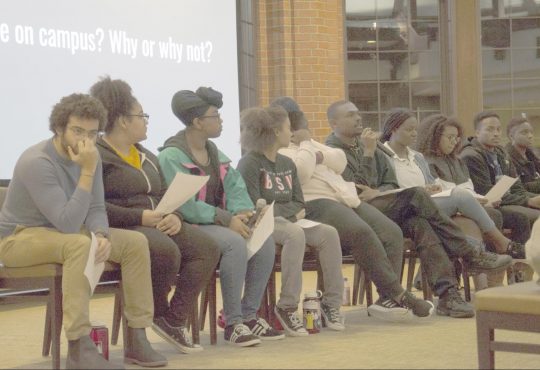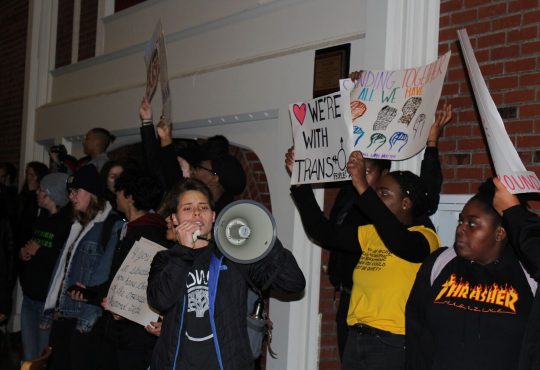KUPS and the Black Student Union have recently paired up to bring a series of films to campus that center on the lives of black musicians. There are four films in the series, which has been playing since the end of February.
KUPS and BSU partnered with The Catherine Gould Foundation to show the third film Follow Me Down: Portraits of Louisiana Prison Musicians on April 4 in Rausch auditorium.
The director of the documentary, Ben Harbert, was present at the screening to discuss the direction he took in the filming of the movie. “Making a film about music and prison is problematic because of the way we view music and the way we view prisoners,” Harbert said.
He went on to explain that one of the issues about the way we view music is that it’s presented as something that is necessarily good and doesn’t account for the challenges music can place on a person.
Another issue has to do with the way we view prisoners; we look at them and wait for moments of epiphany for when they become redeemed.
Harbert’s point was that he did not want to “investigate the relationship between criminality and deviance in music.” He chose to respect the privacy of the inmates by keeping a “soft focus” on what their lives are about, and by fragmenting the narrations so that viewers can make discoveries of meaning on their own.
Harbert classified the film as a concert film, not about talent, but about the work that music does.
Follow Me Down showcased three different prisons in the state of Louisiana. The inmates he focused on were all musicians of many different genres and backgrounds.
Though the film did not center on any one inmate in particular, the words and songs the prisoners had to share are what held the film together as one cohesive piece.
“Everyone in prison has a hurting, a passion. Once you’ve lost that, you’re dead,” said an inmate from the film. They all expressed a similar desire to stay intact mentally and physically while serving time. “To sit idle is to rust, cultivate,” another inmate said.
Many of the prisoners chose to engage in enrichment activities such as the GED program and musical choir. “Without music, I wouldn’t have anything. That’s what keeps me,” another inmate said.
Eventually the prisoner’s lives begin to revolve around whatever passion they still held onto during their sentence. “I am music,” exclaimed a prisoner. After all, a person’s highest aspirations come from what they can believe in. “I believe in God, I believe in music. That’s what I mean when I say hope.”
The film brought forth central themes of faith, hope, healing, patience and growth. And the end of the film, Harbert opened the floor for a brief question and answer segment from the audience. During the Q and A, one of the audience members asked, “What triggered the concept for the film?”
“What triggered it is the amount of people we incarcerate,” Harbert said. He went on to mention how one in one hundred adults are incarcerated in the U.S., and it intrigued him because a lot of the music we sing on the outside world comes from within prison walls.
One of the viewers in the audience said she found the film interesting because it reminded her of the power of music; the way music can provide purpose and direction unlike anything else.
On May 2, the final film from the series will be played in Rausch Auditorium at 7 p.m. Students are encouraged to attend to see the wonders music can play in people’s lives.





